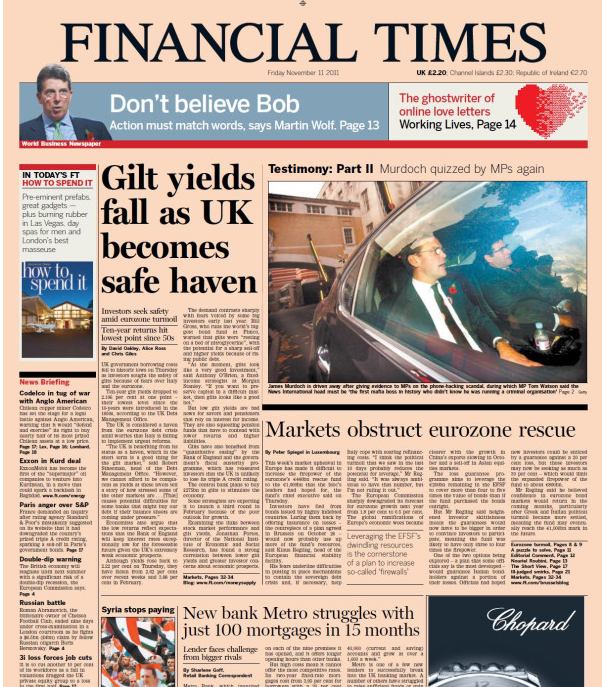 The Bond Bubble is growing even larger over Britain, pushing 10-year yields down to 2.1
per cent. The FT splashes on it this morning, and uses the “safe haven” line, which is also being advocated by the Conservatives. Understandably. If I were George Osborne, I’d
spin this as a standing ovation from the markets for my deficit reduction plan.
The Bond Bubble is growing even larger over Britain, pushing 10-year yields down to 2.1
per cent. The FT splashes on it this morning, and uses the “safe haven” line, which is also being advocated by the Conservatives. Understandably. If I were George Osborne, I’d
spin this as a standing ovation from the markets for my deficit reduction plan.
In fact, it’s just a grim reflection of the fact that Britain’s low-growth, high-debt economy is less unattractive than Italy’s. But it does have another side effect, that people won’t quite admit to.
Osborne’s cost of borrowing is going down (partly due to expectations of more QE) and since the Budget, ten-year yields are off about 130bp. More importantly, there are even bigger declines in the forecast yields projected by the Debt Management Office. That won’t save very much this year, but Citi’s estimates suggest the lower yields will save Osborne £6 billion next year, rising to £12 billion in 2015/16.
But before there’s too much celebration at the low gilts, let’s also remember it will lower the value of pensions. This not only makes us all poorer, but has a knock-on effect which sees companies spend less because they’re trying to make good their pension deficits.
And whatever Osborne gains in lower borrowing costs, he’ll lose in lost tax revenue because the economy is growing way slower than he forecast. Low bond yields often accompany low growth. After all, if low gilt yields were good news, the Japanese economy would be a roaring success by now.
Given how regularly Ed Balls recycles Paul Krugman’s columns, I’m surprised he hasn’t yet said these low gilt yields demonstrated that the markets don’t care about high debt. But what we’re seeing is a freak economic creation, the Bond Bubble, which — like most bubbles — will only be widely recognised once it has burst. Until it does, the best analysis you’ll read is Allister Heath’s cover story on the Bond Bubble here.







Comments